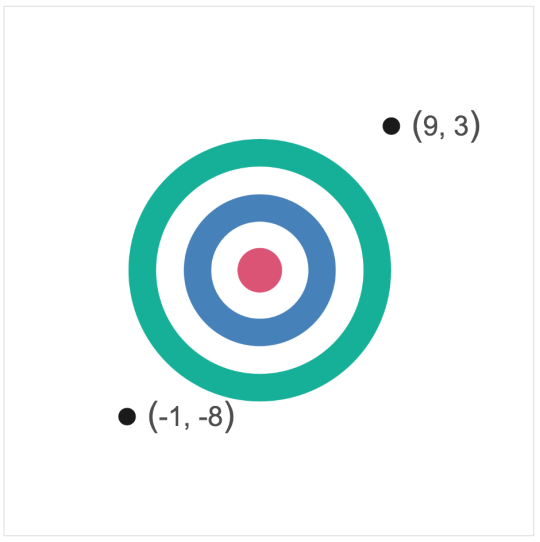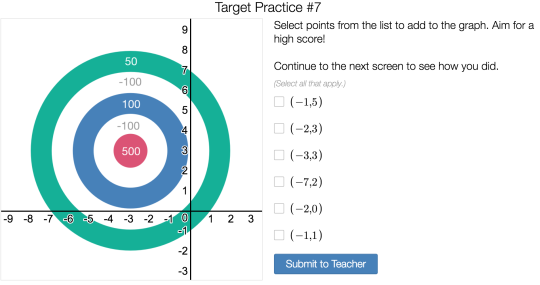[FF] The (Even More) Awesome Coordinate Graphing Activity
One of our most used activities is The (Awesome) Coordinate Plane Activity. We think its popularity speaks both to the ingenuity of its author, Nathan Kraft, and also to the math student’s great need for graphing practice. Math teachers know what students need and Nathan knew how to help.
Since Nathan created that activity last year, we’ve upgraded our internal toolbelt and also our internal style guide for making great activities.
One of those principles is that practice should also involve elements of strategy. Practice should propel students towards procedural fluency, but that fluency should propel students towards more than just more practice.
So in our current version of Nathan Kraft’s classic, students receive feedback on exercises like this.

But later they’re asked to work without the axes.

And then later they’re asked to throw the darts.

So use Nathan’s activity as you’re helping students review or practice coordinate graphing. But ask yourself also how you can inject strategy into your existing practice sets – whether they’re on computers or on paper.

